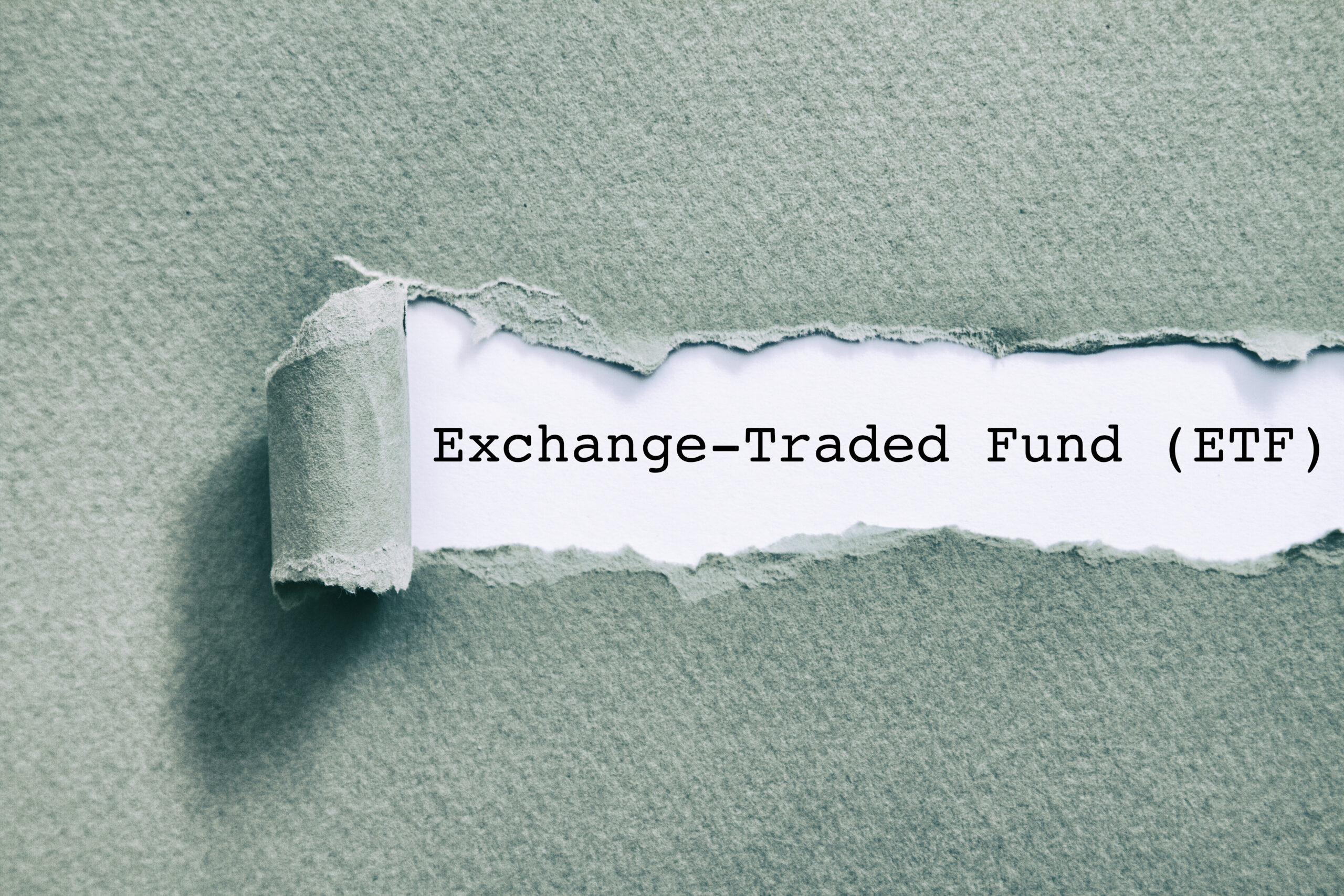An exchange-traded fund (ETF) is an investment vehicle that is similar to a mutual fund but with shares that trade on a stock exchange. ETFs can offer investors a convenient way to diversity their portfolio so they can work toward their investment goals while minimizing risk. Learn how ETFs work and more about their pros and cons.
ETF: A Definition
Exchange-traded funds (ETFs) are pooled investment securities that hold a basket of assets like stocks, bonds, or commodities. They work like mutual funds, except you buy shares of an ETF over a stock exchange as you would buy stocks, and not through a broker or from the fund itself.1
An ETF may follow a particular index, hold stocks in a specific industry, focus on a specific commodity, or hold stocks of companies of a certain size, among other objectives.
How ETFs Work
ETFs are similar to mutual funds in that they hold many securities purchased with pooled investments. By providing a way to invest in many assets at once, ETFs provide diversification, which reduces risk.
ETFs can be structured in many different ways. They may track a market index like the S&P 500 Index or the Dow Jones Industrial Average (DJIA), or they may hold a particular kind of commodity. They could include securities from a specific sector or geographic region.2
An ETF can be either actively or passively managed. ETFs that are passively managed track a particular index by investing in the same securities as the index to mirror its returns. Passively managed funds may also invest in a particular market sector or market trend. Actively managed funds, on the other hand, have portfolio managers who choose the assets to include in the fund to achieve a specific investment objective. Actively managed funds typically have higher fees.3
The price of an ETF’s shares changes throughout the trading day, just as stock prices change. In contrast, shares of mutual funds trade once daily after the markets close, and all investors pay the same price, which is the net asset value (NAV), or the price of the fund’s assets minus its liabilities.
ETFs vs. Index Funds
An ETF and an index fund may be the same with some funds, but they are not always the same. An ETF can be an index fund if it tracks a particular market index, such as the S&P 500 or the Dow Jones, and tries to mirror its returns. In these cases, the fund would either invest in all the securities in proportion to those in the underlying index or invest in a sample of those securities.
An ETF is not an index fund if it does not invest with an underlying index, but invests toward other goals, such as focusing on a market sector or industry. Similarly, an index fund is not always an ETF – it can also be a mutual fund that does not trade on an exchange.4
ETFs vs. Mutual Funds
ETFs are very similar to mutual funds in that they pool investors’ money to buy a basket of securities. This provides investors with a convenient way to diversify. However, ETFs are not the same as mutual funds.
Unlike a mutual fund, shares of an ETF trade over a stock market exchange during the trading day. ETF prices change continually according to market demand, whereas shares of mutual funds are typically priced only once a day after the market closes.
The minimum investment requirement tends to be lower for ETFs than for mutual funds. You can invest in an ETF for the price of one share, which can be a relatively low dollar amount. Mutual funds may require a minimum initial investment of several hundred or thousand dollars, although some mutual funds may have much lower purchase requirements.5
How to Invest in ETFs
You invest in shares of an ETF just like you would buy and sell shares of stock. First, you need to open a brokerage account, which can be done online. You can find the ETF you’d like to buy by searching with its name or ticker. You can then place the trade according to the brokerage’s process.
The right ETF for you will depend on several factors, including your financial situation, investing goals, and risk tolerance. For example, if you are a younger investor with a longer investing horizon, you may accept more risk to try to achieve more gains by investing in an ETF that includes small cap companies or technology companies. If you are an older investor, you may want a more conservative ETF to prioritize wealth preservation.
The Bottom Line
ETFs can be a valuable tool to help you achieve your financial goals, but keep in mind that you can also lose money investing in them. Before investing in any fund, be sure to read its prospectus and fully understand the risk and associated fees. You can consult with a professional financial advisor to learn more about whether ETFs may be a good fit for your portfolio.
1 Investor.gov, “Exchange-Traded Funds (ETFs)” https://www.investor.gov/introduction-investing/investing-basics/investment-products/mutual-funds-and-exchange-traded-2
2 Securities and Exchange Commission, “Investor Bulletin: Exchange-Traded Funds (ETFs)” https://www.sec.gov/investor/alerts/etfs.pdf
3 Investor.gov, “Exchange-Traded Fund (ETF)” https://www.investor.gov/introduction-investing/investing-basics/glossary/exchange-traded-fund-etf
4 Investor.gov, “Index Funds” https://www.investor.gov/introduction-investing/investing-basics/investment-products/mutual-funds-and-exchange-traded-4
5 Securities and Exchange Commission, “Mutual Funds and ETFs: A Guide for Investors” https://www.sec.gov/investor/pubs/sec-guide-to-mutual-funds.pdf
A diversified portfolio does not assure a profit or protect against loss in a declining market.
Investors cannot invest directly in indexes. The performance of any index is not indicative of the performance of any investment and does not take into account the effects of inflation and the fees and expenses associated with investing.
Mutual Funds and Exchange-Traded Funds are sold only by prospectus. Investors should consider the investment objectives, risks, charges, and expenses carefully before investing. The prospectus, which contains this and other information about the investment company, can be obtained directly from the company or from your financial professional. The prospectus should be read carefully before investing or sending money.


